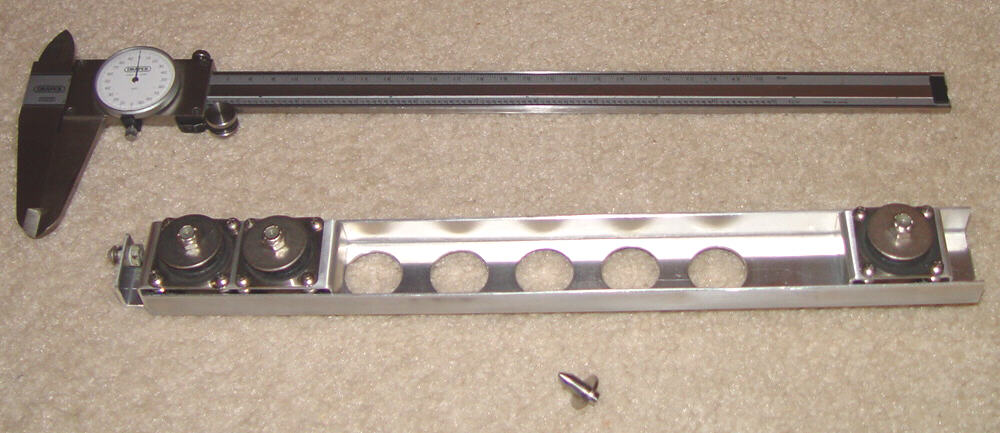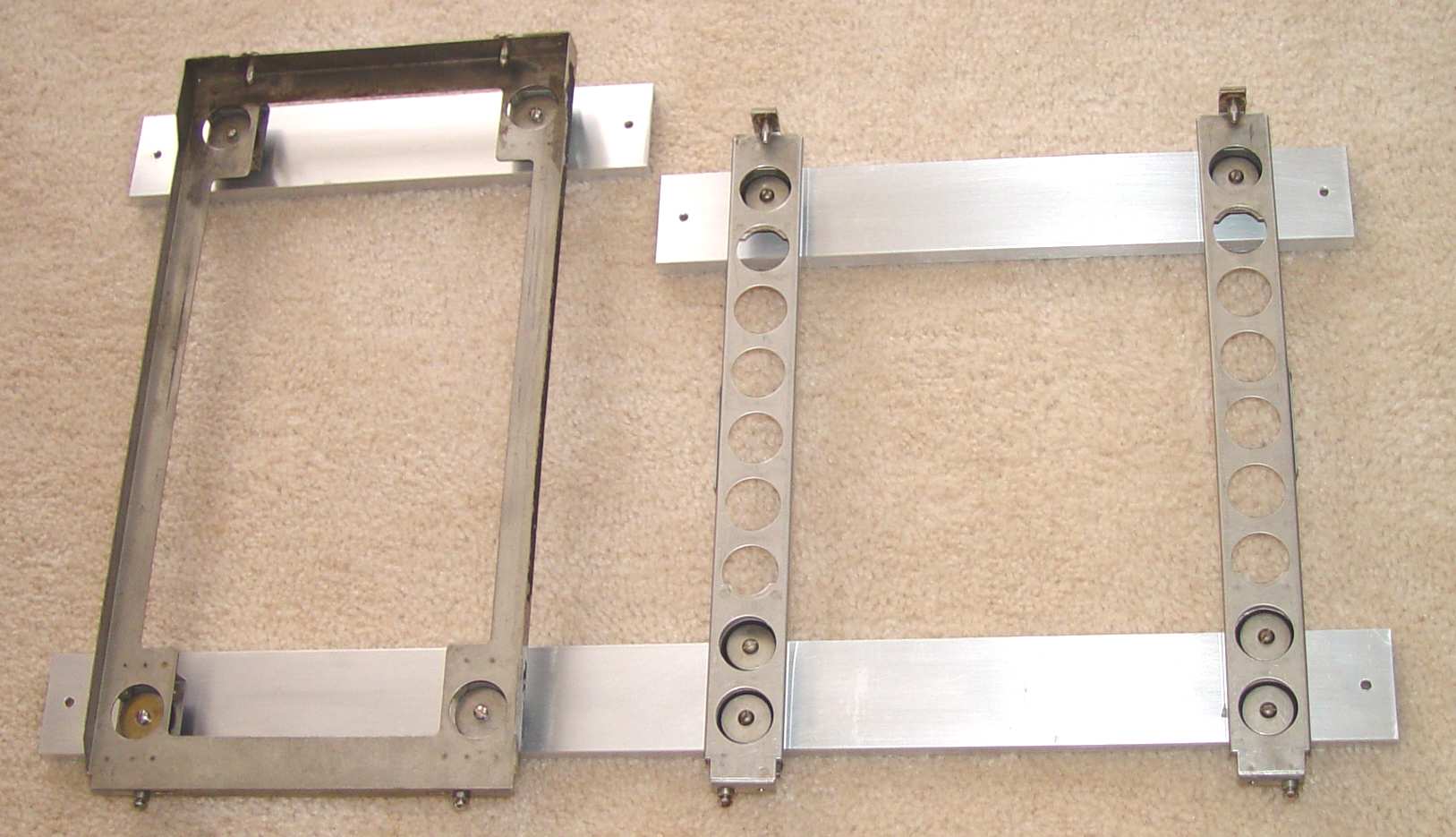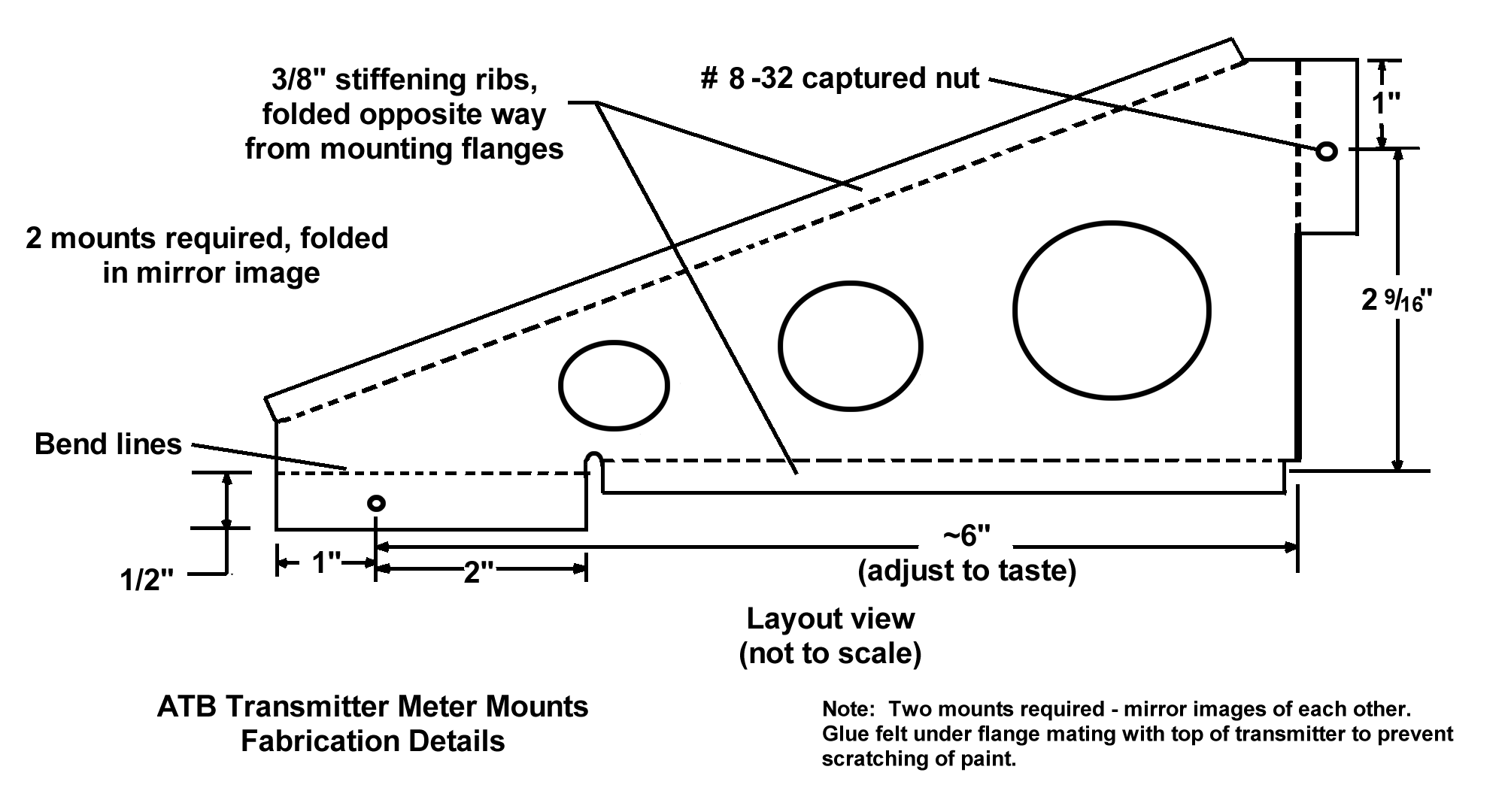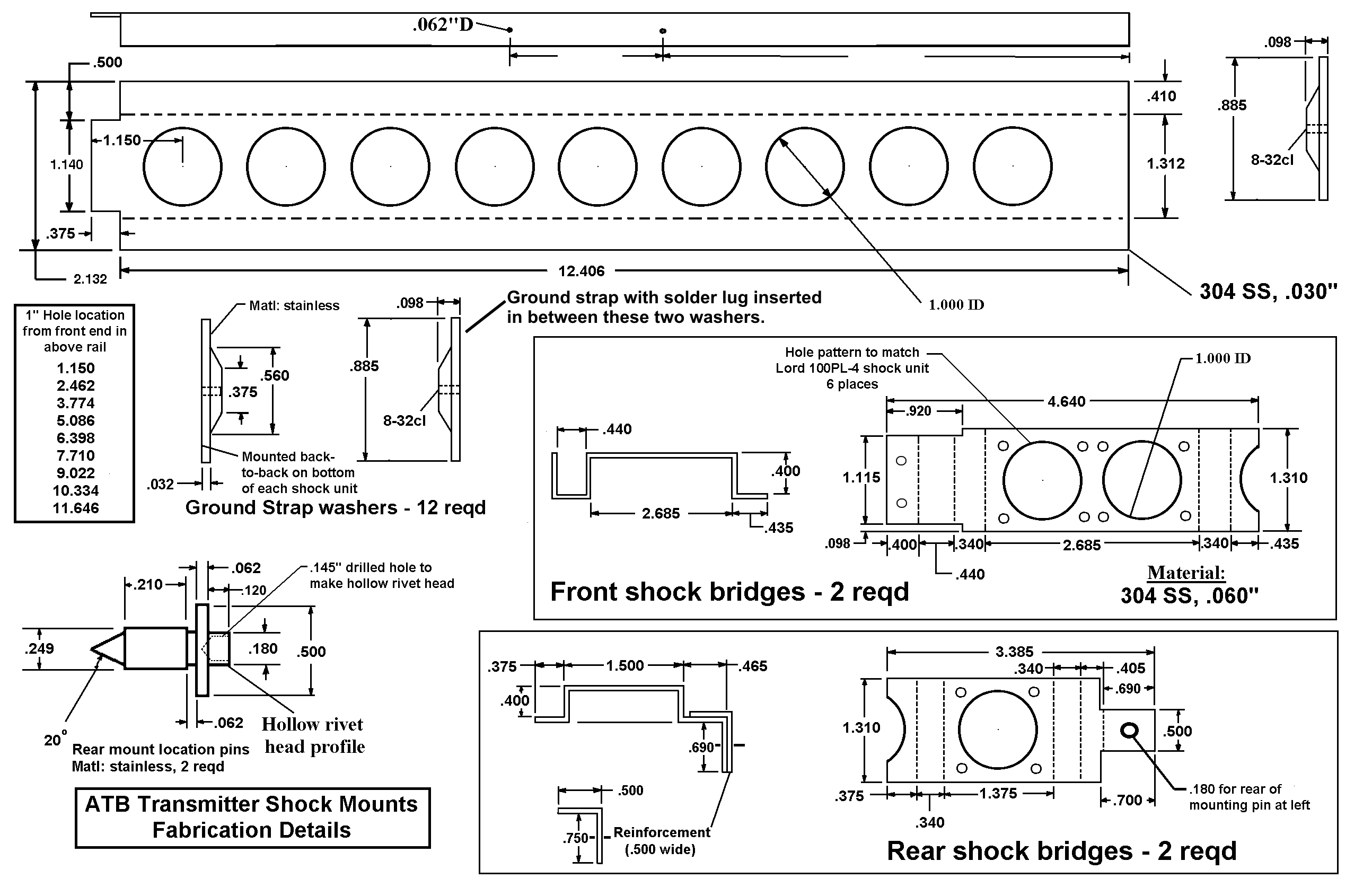

The comparative rarity of the Navy ATB transmitter has absolutely nothing on the difficulty in finding its peripherals. Weary of searching for the shock mounts, it became clear that the only practical solution was to fabricate a pair using original drawings and materials. Seen above is a partially finished first prototype of that effort - the 12" dial calipers are for scale. The small stainless steel button gets riveted to the topside tab (not visible), and slides into a mating hole in the rear of the transmitter. Normally the pair of these mounts was then installed on crossbeams on a larger rack in the aircraft. A couple of nomenclature tags was to be next in the fabrication queue.
Below are photos of an original mount I was eventually able to acquire. This is a phenomenon that others have experienced as well...it seems that only after sinking inordinate amounts of time into fabrication that an original part floats to the marketplace surface...heh. Mounting holes in the sheet metal for the front snap slide stud and nomenclature tags are symmetrical so that it could be used on either side of the transmitter. Only the position of the riveted snap slide stud and tag was then made unique for left and right sides...go figure...


Both the ATB transmitter mount and the ARB receiver mount are about as complex a fabrication project as one can imagine for devices that simply hold a radio up in the air on shock absorbers. One has to wonder what RCA was thinking when they designed them! They are difficult to install in the aircraft, and require careful alignment of far too many holes in a rack or the radios won't fit into them without force that can distort the rubber inserts. They are obviously expensive to manufacture because of all the piece parts that go into them. The complaint list goes on and on. For those with a lot of patience in fabrication, there is a sketch of the mount at the bottom of this page, including piece parts.
The reason I didn't provide the drilling dimensions for the locating pin holes above is that I stopped pre-drilling any holes for the front and rear locating posts after I learned the hard way that all radios are a little different from each other. Add the vagaries of free air sheet metal bending to the mix, and the result (at least for me) has almost always been a wasted drilling operation. Ever since then, when I make a mount, I place the finished mount on the radio it will mate to, and use a locating punch to hit the exact center of each snap slide or locating pin in the radio. It saves a lot of filing and muttering under my breath about the ill-tempered recalcitrance and general obstinance of sheet metal...I do enough of that anyway - it approaches the material called wood in that regard...
Below is the mounting arrangement for use in the AAFRadio "Flight Deck", using 2" x 1/2" aluminum channel. Note that if you wish to have the front panels of the receiver and transmitter share the same plane for aesthetic reasons, none of the hole patterns line up in the "Y" axis direction....

There is one additional fabrication job that makes the transmitter a bit more user friendly, and that is a pair of braces to lock the otherwise tipsy meter box to the top of the transmitter. Below is a sketch of the pair I made for mine. Finished off with a black wrinkle finish, they fit right into the motif and require no modification to the transmitter or meter box whatsoever. I made another pair of knurled thumbscrews like the ones on the meter box to mount the braces on the transmitter, but you could use 8-32 screws just as easily. Just make sure that they are made from stainless steel to meet US Navy salt spray requirements...

